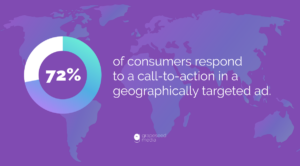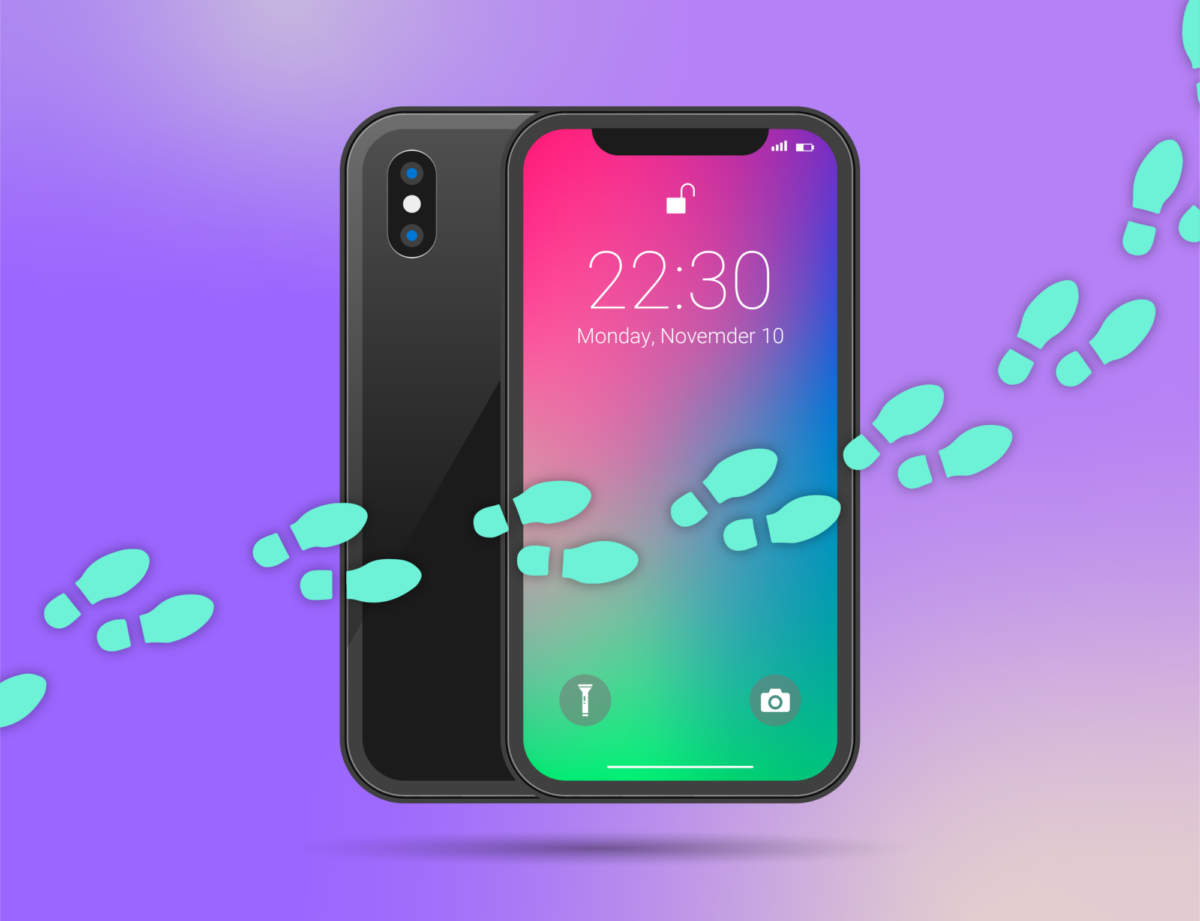Picture this: a potential customer is considering buying a second-hand car, so they head to their local dealership to check out what’s on offer.
They test drive a few options, then go home to consider their decision.
A few weeks later, they open an app on their phone, and what do they see? Ads from the dealership showing second-hand cars for sale.
It might feel like a coincidence, but it’s not. This is the power of a mobile footprint, and it’s changing the game for advertisers and marketers alike.
Let’s take a look at what mobile footprinting is and how it can help you advertise more effectively and get the most out of your ad spend.
What Is Mobile Footprinting?
Advertisers use mobile footprinting to identify users based on their device’s location data, allowing them to target people who were at a particular destination at a particular time with relevant ads.
For example, if a new sushi restaurant opens in your town, it could use mobile footprinting to serve ads to people who went to other local sushi restaurants over the last twelve months.
The targeted ads are more likely to be relevant to the person’s interests, and since 72% of consumers respond to a call-to-action in a geographically targeted ad, they can boost engagement and sales.

How Does Mobile Footprinting Work?
When a user’s device interacts with location-based services, such as GPS or Wi-Fi, it generates a mobile footprint. This can provide insights into their physical movements, which can be valuable for marketers looking to implement location-based advertising campaigns.
What Are the Benefits of Mobile Footprinting?
Mobile footprinting has become an essential marketing and advertising tool, and for good reason. Using it in campaigns has several advantages, including the following:
1. Greater Local Relevance
One of the most powerful aspects of mobile footprinting is its ability to deliver ads that are specific to the user’s location, making it a great way to promote local brick-and-mortar businesses and events.
By targeting local users, physical businesses can take advantage of post-pandemic shopping trends, such as the return to physical retail shopping and “click-and-mortar” shoppers — those who buy online then head to the store to pick up their purchases.
2. Better Personalization
One of the major advantages of using mobile footprinting is the increased personalization it provides. Advertisers can tailor their campaigns to be more relevant to the individual by collecting data on a user’s interests, behaviors, and location, thereby increasing the likelihood of engagement and conversion.
A retailer selling outdoor equipment, for example, can use mobile footprinting data to target customers who have recently visited rival stores, local hiking trails, or campsites. By displaying advertisements for relevant products and services, the retailer can increase conversions and provide a more personalized experience for the user.
3. Improved Customer Targeting
Mobile footprinting also allows for better customer targeting — a business can target their advertising to the right audience at the right time, increasing conversion rates and maximizing ROI.
Consider a new artisan coffee house, for example. They can use mobile footprinting data to target users who have visited a Starbucks location over the past six months promoting their launch offer.
4. Increased ROI
When compared to traditional advertising methods, the use of mobile footprinting can help businesses achieve a higher return on investment. This is because businesses can improve conversion rates and lower overall advertising costs by leveraging data-driven insights to create more effective and personalized campaigns.
How To Use Mobile Footprinting In Advertising and Marketing
Mobile footprinting comes with various benefits, but only when you effectively leverage the data. Here are some top ways to use mobile footprinting to create more effective advertising and marketing campaigns:
- Data collection and analysis: Data collection and analysis are essential for comprehending your intended audience. You can gain insights into user demographics, interests, and behaviors by analyzing mobile footprinting data and using it to develop more targeted and efficient advertising campaigns.
- Creating customized ad campaigns: It’s critical to create tailored ad campaigns in order to connect with your target audience. This is where mobile footprinting comes in. You can improve customer targeting and conversion rates by using mobile footprinting data to tailor your ad content to specific user demographics, interests, and behaviors.
- Implementing location-based strategies: You can use location-based mobile footprinting data to implement advertising strategies based on a consumer’s physical location. You can, for example, offer discounts or promotions to users who are close to a specific store, increasing foot traffic and sales
- Retargeting: Retargeting is an effective method for reconnecting with users who have previously interacted with your brand or website. Using mobile footprinting, you can retarget users who have expressed interest in your product or service to increase the chances of conversion and improve the ROI of your campaigns.
Understanding the data and how it can be used to create more personalized and effective advertising strategies can help you in effectively using mobile footprinting data in advertising and marketing campaigns.
Case Study: Mobile Footprint Advertising in Practice
Looking for a real-life mobile footprint advertising example to inspire your next campaign?
Grapeseed Media once rose to the challenge of launching a mobile footprinting campaign to target football watch parties on a big game day — in just 24 hours.
The campaign delivered:
- 42,582 pDOOH impressions
- 0.57% CTR (five times the industry benchmark)
- 7,013 landing page visits
- 3,503 sweepstake submissions
Read about the exact mobile footprinting strategies we used to achieve these results.
Maximizing ROI with Mobile Footprint Advertising
If you’re ready to try mobile footprint advertising, bear in mind these three best practices to maximize your ROI.
1. Measuring Success through Real-Time Analytics
Real-time analytics allow you to track the performance of your campaigns while they’re running and make quick adjustments based on what’s working and what isn’t.
This helps you allocate resources to the most effective strategies, boosting ROI.
2. Optimizing Ad Campaigns for Increased Conversions
By continuously analyzing user engagement and conversion rates, you can fine-tune your campaigns to better meet the needs of your target audience.
Optimization might include adjusting ad copy, timing, or placement to drive higher conversion rates.
3. Enhancing Customer Experiences with Tailored Messaging
Personalized messaging that resonates with individual preferences and behaviors can improve the customer experience and boost brand loyalty.
Mobile Footprinting Considerations
While mobile footprinting can be an effective strategy when done well, it’s essential to consider user privacy and make sure that your campaigns:
- Respect user privacy and data security regulations.
- Ensure transparency in data collection and usage practices.
- Focus on providing value and avoiding intrusive marketing tactics.
Improve Your Campaigns With The Right Mobile Footprinting Partner
Understanding mobile footprinting is critical for staying ahead of the competition and reaching your target audience in today’s world, where people are constantly connected to their mobile devices. But you don’t have to go it alone.
A specialist partner like Grapeseed Media can provide the expertise and strategic guidance you need to make the most of mobile footprinting data, improve your campaigns, and increase ROI. Get in touch with us to learn more about how you can use mobile footprinting to take your advertising and marketing efforts to the next level.






